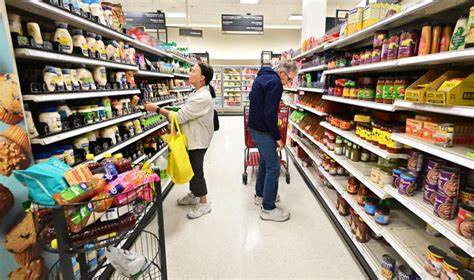Inflation has indeed experienced a notable slowdown recently, marking a welcome relief for consumers and policymakers alike. In March, overall prices increased by 3.5% compared to the previous year, with the rising costs of rent and gasoline being significant contributors to this uptick, as reported by the Labor Department’s consumer price index. The monthly increase of 0.4% mirrored the trend observed in the preceding month, maintaining a steady trajectory.
On the other hand, the nation’s gross domestic product (GDP) continues to display resilience, albeit at a slightly slower pace. According to data from the Commerce Department, the GDP expanded at a seasonally adjusted annual rate of 3.4% in the October-December period. While this figure represents a modest deceleration from the robust growth of 4.9% witnessed in the third quarter, it surpassed economists’ earlier forecasts of a 2% advance.
Despite these positive economic indicators, concerns persist among some economists regarding the potential onset of a mild recession later this year. Previous recessions have typically been triggered by significant shocks to the economy, such as housing crises or pandemics. However, analysts speculate that a modest downturn in the near future could stem from the delayed impacts of the Federal Reserve’s interest rate hikes, which were initiated to curb inflationary pressures. Given economists’ initial projections of a growth slowdown to around 2% in 2024, the economy remains susceptible to a mild recession with relatively little provocation.
If a recession were to materialize, its implications for everyday life would be significant. A recession is characterized by a contraction in economic activity, typically lasting for more than a few months and affecting various sectors of the economy. While predicting the exact onset of a recession remains challenging, economists currently estimate a 30% chance of a downturn in 2024, significantly lower than earlier projections. Nevertheless, the potential impact of a recession raises questions about job security, consumer spending habits, and overall economic stability.
During a recession, the economy contracts as a result of reduced spending by consumers and businesses. This decline in spending leads to decreased demand for goods and services, resulting in job losses and reduced production levels. In addition to economic indicators like GDP and employment figures, other factors such as consumer spending, retail sales, and industrial production are considered when determining the onset of a recession.
Overall, while the possibility of a recession looms on the horizon, the exact timing and severity remain uncertain. However, economists and policymakers continue to monitor economic indicators closely to assess the likelihood of a downturn and its potential impact on individuals and businesses alike.
